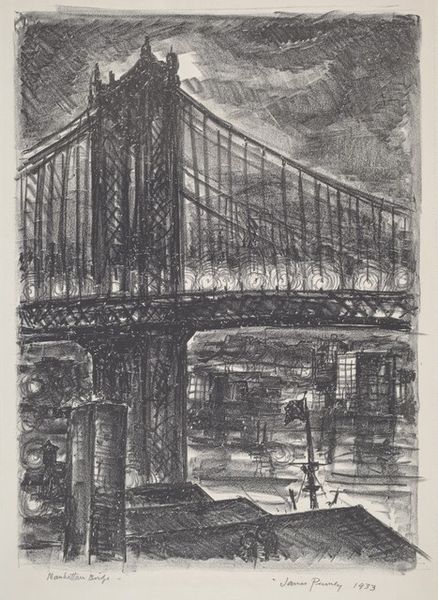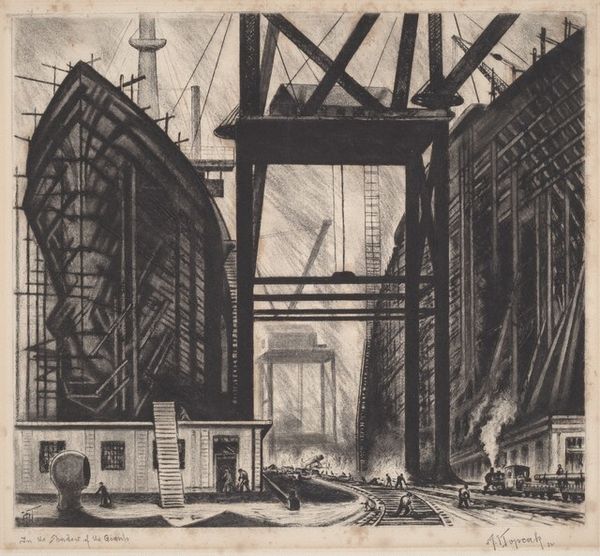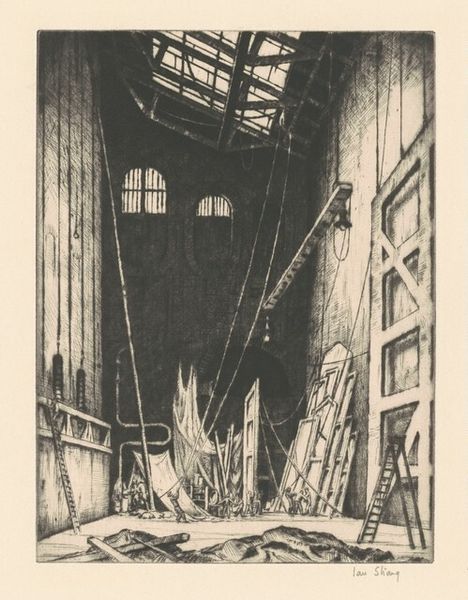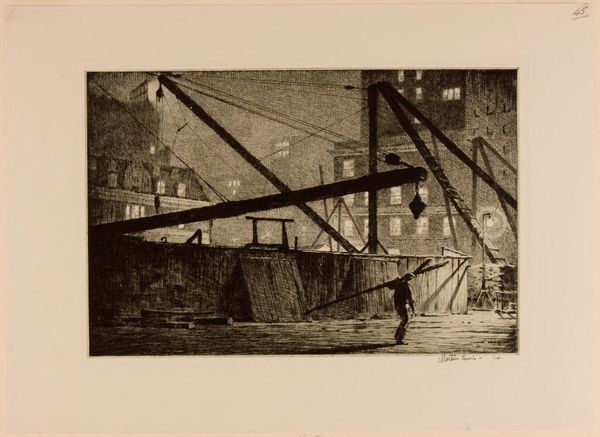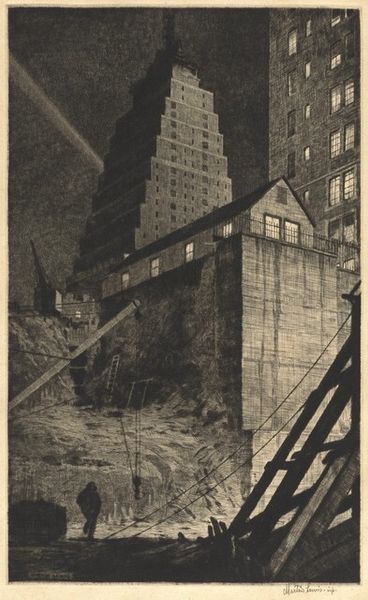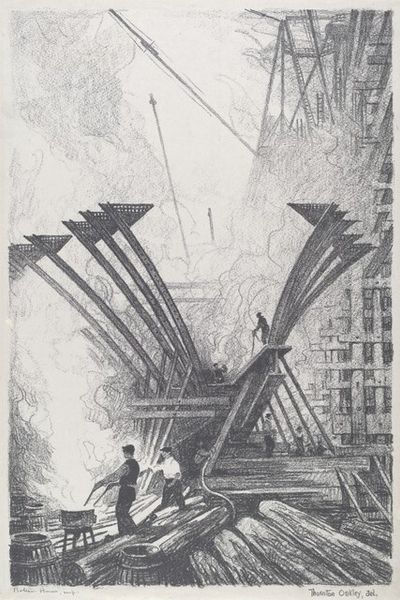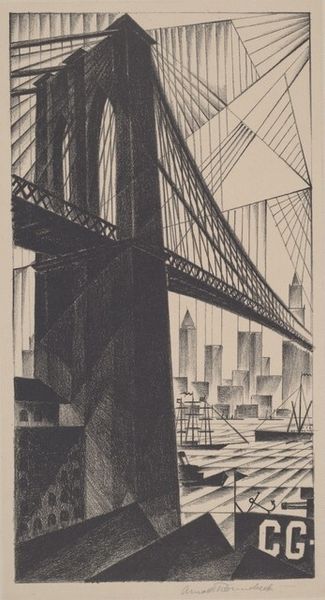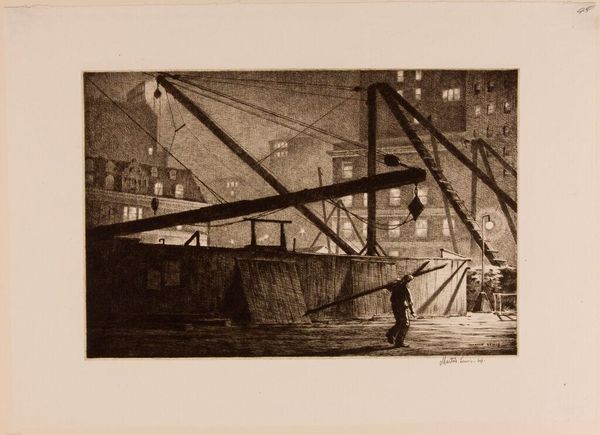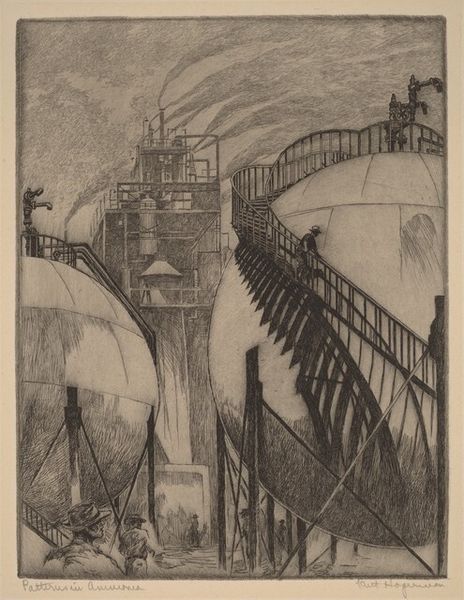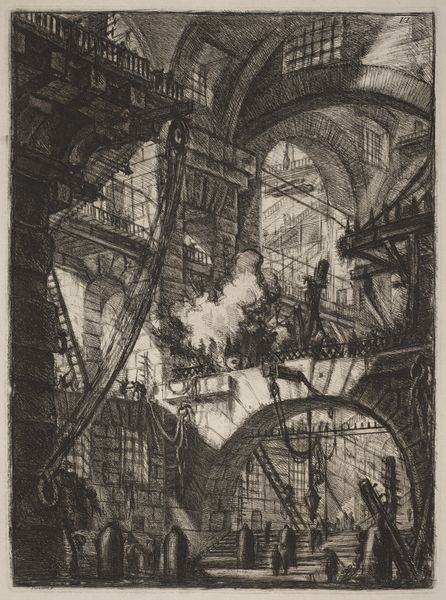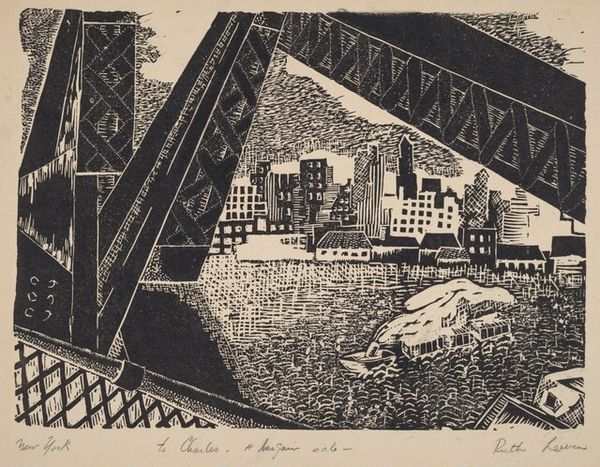
drawing, print, etching, charcoal
#
drawing
#
narrative-art
# print
#
etching
#
charcoal drawing
#
surrealism
#
ashcan-school
#
cityscape
#
charcoal
#
realism
#
monochrome
Dimensions: image: 375 x 310 mm sheet: 570 x 400 mm
Copyright: National Gallery of Art: CC0 1.0
Editor: Here we have Leonard Pytlak's "End of Day," a monochrome drawing, possibly charcoal or an etching. It shows a gritty urban scene, and there's a feeling of loneliness or maybe just fatigue about it. What draws your eye when you look at this? Curator: Well, first I consider the artist’s choices – charcoal or etching, mediums inherently tied to reproduction and distribution. This pushes me to consider how the image participates in the commodification of urban experience, particularly through the Ashcan school lens. It looks like a scene documenting labor. How does this choice of medium impact our understanding of the scene portrayed, the labour depicted? Editor: That's interesting. I was focused on the subject, the figure carrying something, but I didn't really consider the medium itself. It adds another layer. It's almost like the print itself is a product of labor mirroring the person we see on the street. Curator: Exactly! And what does that smoke stack tell us? Factories, industry - the infrastructure is built through labor, impacting not just work, but class, housing. We see here also this person almost fading from view…the end of their working day perhaps? Pytlak forces us to confront the material realities behind even the most seemingly romantic or "realistic" depictions of city life. Editor: So it's less about capturing a moment and more about showing the process and consequences of industry on the individual. It feels like the print-making technique adds a social dimension to what would otherwise be a straightforward urban sketch. Curator: Precisely! Think about who this image was created for and how the production impacted what's depicted here. Editor: I hadn't really considered it that way before, but focusing on the production really makes me look at it from a new perspective. Curator: Yes, by considering material means and its subsequent access by larger audience we see this wasn't simply a representation, it's about class, labor, access, and economy.
Comments
No comments
Be the first to comment and join the conversation on the ultimate creative platform.

